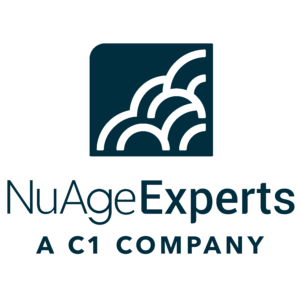Once you’ve researched root causes and explored potential solutions for your #Salesforce technical debt, it’s time to formalize your approach. A comprehensive resolution plan transforms good intentions into actionable roadmaps that drive organizational change. Let’s explore how to create a plan that balances technical optimization with business realities.
#NuAgeExperts offers a ‘Triple Point Inspection’ package which identifies tech debt. Talk to us today!
Elements of an Effective Resolution Plan
1. Executive Summary
Begin with a concise overview that frames the initiative in business terms:
- Business Justification: Quantify how the tech debt impacts key metrics (e.g., “Customer onboarding process delayed by 30% due to validation rule conflicts”)
- Value Proposition: Articulate expected returns (e.g., “25% reduction in case handling time”)
- Resource Requirements: Summarize time, personnel, and budget needs
- Timeline Overview: Provide high-level implementation phases and durations
Pro Tip: Keep the executive summary under one page. Decision-makers should grasp the essential “why” within minutes.
2. Success Criteria
Define what “done” looks like with specific, measurable outcomes:
✓ User-reported errors in opportunity creation reduced by 90% ✓ Troubleshooting reduced by 25% by using a centralized error handling app ✓ Admin time reduced by 4 hours weekly for field & page updates ✓ Validation rules documented with clear business purpose ✓ Zero recursive automation during smoke testing
Establish both technical and business success metrics that align with organizational goals. This creates accountability and demonstrates ROI.
3. Phased Implementation Roadmap
Break down your approach into manageable phases that deliver incremental value:
Phase 1: Foundation Setting (Weeks 1-2)
- Documentation of current state
- Dev sandbox environment setup
- Test/regression script creation
- Initial stakeholder buy in
Phase 2: Low-Risk Improvements (Weeks 3-5)
- Consolidation of duplicate fields
- Removal of unused automation
- Cleanup of obsolete page layouts
Phase 3: Core Restructuring (Weeks 6-9)
- Migration of critical automation to Flow from legacy automation
- Refactoring of problematic triggers/classes to boost efficiency & code coverage
- Implementation of new data model
Phase 4: Validation and Training (Weeks 10-12)
- User acceptance testing, leveraging test scripts
- Documentation finalization
- Admin and user training
- Continuous monitoring & validation
Pro Tip: Structure phases to deliver visible business value early. Quick wins build momentum and stakeholder confidence.
4. Realistic Timeline Planning
Develop timelines with sufficient contingency for the unexpected:
- Factor in dependencies: Allow time between interdependent changes
- Consider business cycles: Avoid implementations during critical business periods
- Account for review cycles: Build in time for stakeholder reviews and approvals
- Include buffer time: Add 20-30% contingency for unexpected challenges
- Create milestone markers: Establish checkpoints for go/no-go decisions
Sample Timeline Visualization:
Week 1-2: Documentation & Environment Prep Week 3-5: Quick Wins Implementation ← Early Business Value Week 6: Mid-project Review Point Week 6-9: Core Technical Restructuring Week 10-11: Testing and Refinement Week 12: Final Implementation & Training Week 14: Post-Implementation Review ← Lessons Captured
5. Stakeholder Navigation
Map the stakeholder and sign off journey required for your organization:
- Identify stakeholders: Determine who needs to sign off at each stage
- Anticipate questions: Develop responses to likely concerns before they arise
- Leverage champions: Engage influential supporters early to smooth the process
- Plan for iterations: Be prepared to adjust the plan based on stakeholder feedback
- Approval: Document approval of stakeholders
What Comes Next: In our next installment, we’ll explore how to bring this plan to life through strategic change management. Change management is the strategic transition of individuals, teams, and organizations from a current state to a desired future state via stakeholder engagement, communication, training, and support.
NuAge Experts is a senior consulting partner offering a ‘Triple Point Inspection’ package to identify tech debt and strategize with you on next steps. Talk to us today!


